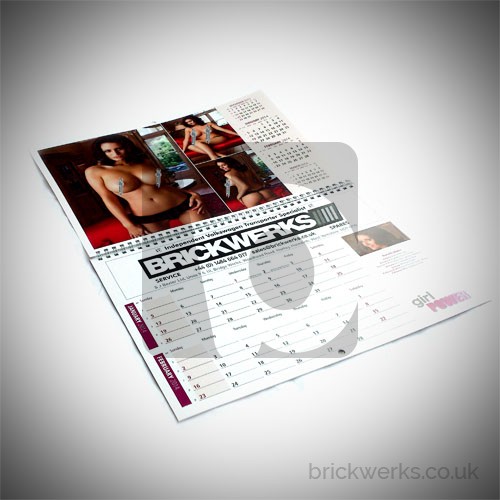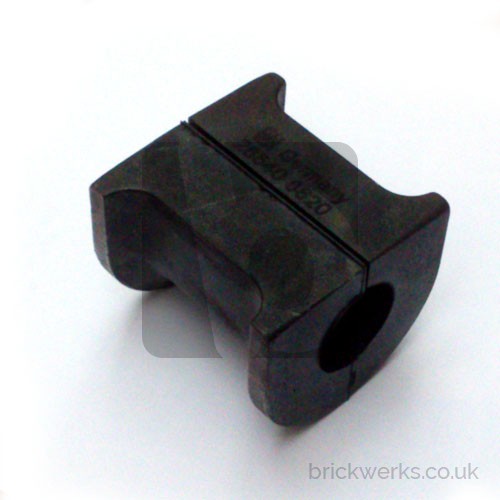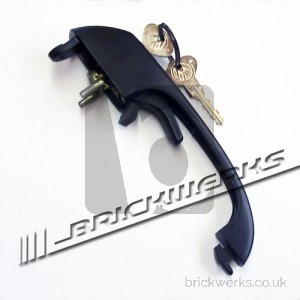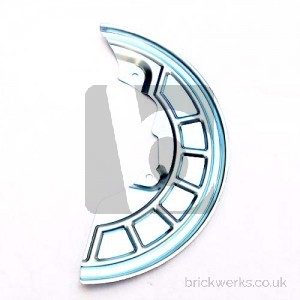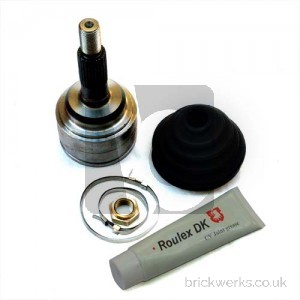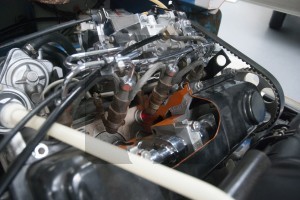Another common bush on the T5’s
OEM Lemf
Month: October 2013
2014 Calendars available now!
T5 Front Anti Roll Bar to Body Bushes
Available in 21mm, 22mm and 24mm Varieties.
If youre not sure what you have, the old open ended spanner over the ARB trick will give you a clue – try slip a 22mm open ender over the ARB… if it wont go on, its a 21mm if its a nice snug fit its a 22mm if its a loose fit its a 24mm
21mm Bush – Webshop Link
22mm Bush – Webshop Link
24mm Bush – Webshop Link
T4 Speedo Cables – Pre 1996 LHD and RHD
Speedometer cable for the early T4 models with the mechanical speedometer.
Originally VW fitted a 2 piece cable, this replaces both pieces all the way from the speedo to the transmission.
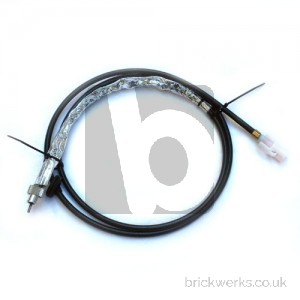
VW T3 Oil Pressure Switches
One of the most frequent cries for help we receive at Brickwerks are to do with oil pressure and oil pressure switches.
We’ve written this page to try and assist customers to select the correct oil pressure switch for their vehicle.
First off we must say if at Brickwerks we have a customer come in to the workshop with a oil buzzer or oil light flashing then the first thing we do is check the oil pressure, without fail. It is simply not worth taking the risk, there may actually be a genuine fault with the engine and the light or buzzer might actually be telling the truth!
The oil pressure is reasonably simple to check with a pressure gauge.
With the engine oil at 80°c and the engine speed at 2000rpm then the oil pressure for all engines [except the 1.6TD “JX” engine] should be at least 2bar or 30psi if you are old!
For the JX engine, that’s the 1.6l turbo Diesel engine then the pressure must be at least 1 bar at 80° @ 2000rpm.
If the oil pressure is correct then let us proceed..
Up to the end of the 1984 model year it’s fairly simple, there is one switch and it is colour coded blue. That’s it, blue.
The oil pressure switch is connected to a blue wire with a black trace, or black stripe if you prefer.
This switch is what is called “normally closed”, meaning at rest with the engine stopped the terminal will be connected to earth through the body of the switch. Once pressure is applied to the switch and it reaches a predetermined pressure [.25 bar in this case / 3.68 psi] then the pressure will overcome an internal spring and break the circuit between the terminal and earth.
Remember when you were at school and you did some simple electrical circuits? The oil pressure light is a simple circuit like from your school days, it is a bulb, a battery and a switch only the switch is operated by engine oil pressure.
With no oil pressure the switch is at rest, the terminal is connected to the body of the switch and this will illuminate the light, once the engine starts and oil pressure reaches .25 bar [3.68psi for the giffers] the pressure opens the switch and the light goes out.
Okay, so up to the end of the 1984 model year its simple, one switch and a blue/black wire, if you look at your chassis number [VIN if you prefer] and find the 10th digit, if it is A,B,C,D or E then your sorted, one switch, one wire.
From 1985 model year onwards [10th digit of the VIN is F onwards] it’s gets a little more complex as VW introduced the “DOP” or Dynamic Oil Pressure monitoring system, or “Buzzer of doom” as it has now become known.
This system retains the blue switch on the blue/black wire but it also has a second switch on a yellow wire.
There is a choice of 3 switches for the oil buzzer system, it could be either white, grey or black.
The colour code depends on which engine you have fitted and annoyingly there is a choice for 88 model year onwards so it isn’t cut and dried as to what should be fitted.
“What does this second switch do Brickwerks”? Well, it’s like this… The oil pressure light is all well and good, but if you are tramming down the motorway and the oil light comes on the chances are that it’s too late and the damage is done before you have chance to stop, VW recognsed this problem so they tried to make the system a little better by giving the driver an early warning that all is not well. VW added a second oil pressure switch and an electronic circuitboard behind the speedometer which includes a buzzer to alert you to a low oil pressure condition.
The buzzer circuitry also reads engine speed from a wire from the engine bay [green on a petrol taken from terminal 1 on the ignition coil, red/black on a Diesel and taken from the W terminal on the alternator] and should only work when the engine speed is above 2000rpm.
| Colour | VW No | NO/NC | Pressure – Bar | Pressure – PSI | Wire |
| Black | 068 919 081 | Open | 1.4 | 20.58 | Yellow |
| Grey | 068 919 081 A | Open | 0.9 | 13.23 | Yellow |
| White | 056 919 081 E | Open | 1.8 | 26.46 | Yellow |
| Blue | 028 919 081 D | Closed | 0.25 | 3.68 | Blue |
The table above gives a few more details to the switches and their opening/closing pressures.
NO – Normally open, when at rest the switch contacts are open.
NC – Normally closed, when at rest the switch contacts are closed.
So, which switches are fitted to which engines?
All engines have a blue switch, all of them.
On a WBX [1.9l or 2.1l petrol engine] the blue switch is on the left hand side of the engine , underneath between the push rod tubes, you may have to remove the covers to get them.
On Diesel engines the blue switch is usually at the far end of the cylinder head near the coolant outlet.
Then, the white/grey black are as follows.
On a WBX the switch is below and between the crank shaft pulley and the water pump pulley, on a Diesel it is on the oil filter head.
All petrol engines, DF, DG, DJ, MV [also SS, SP and SR] have a white switch for ’85, ’86 and ’87 model years. [10th digit of chassis number is F,G or H]
Then from ’88 model year to 1992 [H,J,K,L,M,N] there is a choice of either white or grey.
1.6l D engines with a CS code have a black sensor, they ran those until the end of the ’87 model year so 10th digit of VIN is F,G or H.
1.7D “KY” engines only came out for the ’85 model year, so, same as the “CS” above they have a black sensor for ’85, ’86 and ’87 [F,G and H], then from ’88 till the end of production it could either have a grey sensor or a black sensor.
The 1.6l TD “JX” engine came out for the ’85 model year, for the first 3 year [’85, ’86 and ’87] they had a grey 2nd switch, then from ’86 till ’92 model years they could either be grey or black.
All sensors have a M10x1 thread, 24mm head, a 6.3mm male spade terminal and should be tightened to 30 Nm.
The only thing that messes this system up is that some cheaper sensors ignore the colour coding system, to us it is always better to fit a good quality sensor that retains the factory colour coding so there is no ambiguity in the future.
T3 Cab Door Handles – 251837205
We now have the “Budget” Door handles in stock for T3 models.
We’ve had Genuine VW handles for a while now. Brand new, and with keys
Genuine Handle – Webshop link
Budget Handle – Webshop Link
The advantage of the genuine ones is that you can reset your lock to match the ignition key so you dont end up carrying something resembling the bunch of keys carried by a Jailer!
The budget handles can also be reset… however the key profile is different to that used on a T3, so you cant actually get a T3 key in the lock (see how many others selling these handles dont bother to tell you this!)
So… to sum it up, theyre cheap, theyre metal not the really nasty plastic ones and they come with 2 keys. You wont be able to reset the locks to allow you to use your original ignition key.
Budget Handle – Webshop Link
Syncro Front Brake Splash Plates
Another “Budget” alternative to the stainless steel splash plates we already sell.
These are mild steel, they wont last forever but are cheaper than the stainless ones.
Stainless plates (pair) – Webshop Link
Budget Left – Webshop Link
Budget Right – Webshop Link
Syncro Front Outer CV Joints – BUDGET!
Cheap. Cheerful.
Syncro Front outer joints.
These dont come with the seals or seal retaining rings.
Original retaining rings are too loose on the joints so you cant swap them over either, but you can add a seal by glueing one on.
Just a little test… (5 speed Gear Lever Parts)
There is a baffling variety of names for many parts, so its not always easy to know whats needed when someone asks for the “wibbling wobble valve”
So with clickable images, this example for the 14mm 5 speed gear lever and associated parts, you can just click and it will take you to the part.
We’ll see how we get on with the over 20,964 parts!


